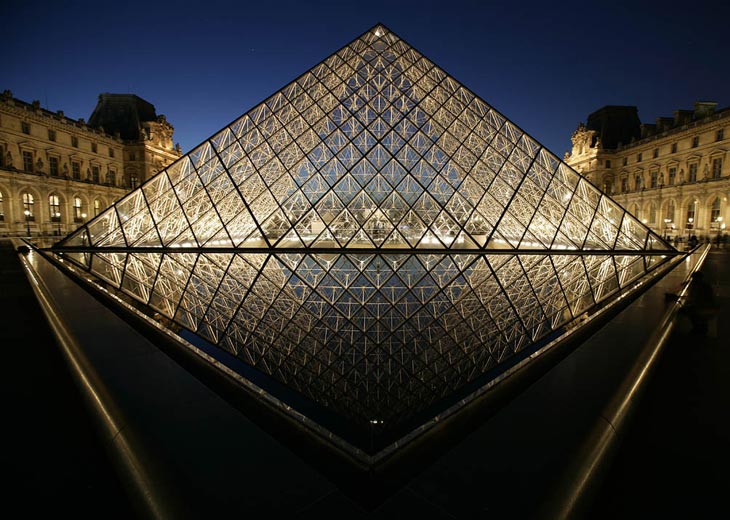
© 2010 Andy Long All rights reserved.
Interesting angles and reflections at the Louvre
When I considered taking a trip to Paris and the south of France, I was less than excited. However, as a dyed-in-the-wool wildlife and nature photographer, I figured once I arrived, my attitude would change as new subjects, lighting, and opportunities presented themselves. I was right. The beauty of the Old World city comes alive both day and night which created a memorable experience. Soon I was already planning a return trip so I could see more than was possible in the few days allocated to me by my restrictive travel schedule.
Certain sights are must-sees on a trip to Paris, and almost everyone knows what they are: the Eiffel Tower (both day and night), the Louvre (mainly at night for photography and during the day for a museum visit), the Arc de Triomphe (day and night), and Notre Dame Cathedral. But the must-sees don’t end with the most famous locales.
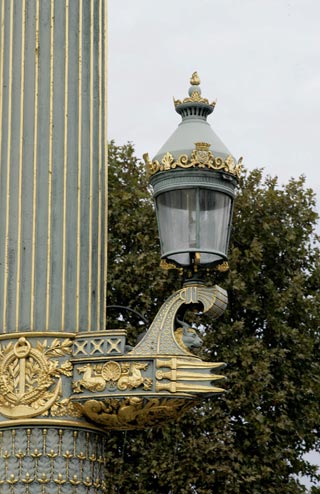
© 2010 Andy Long All rights reserved.
The French paid attention to details even on street lamps.
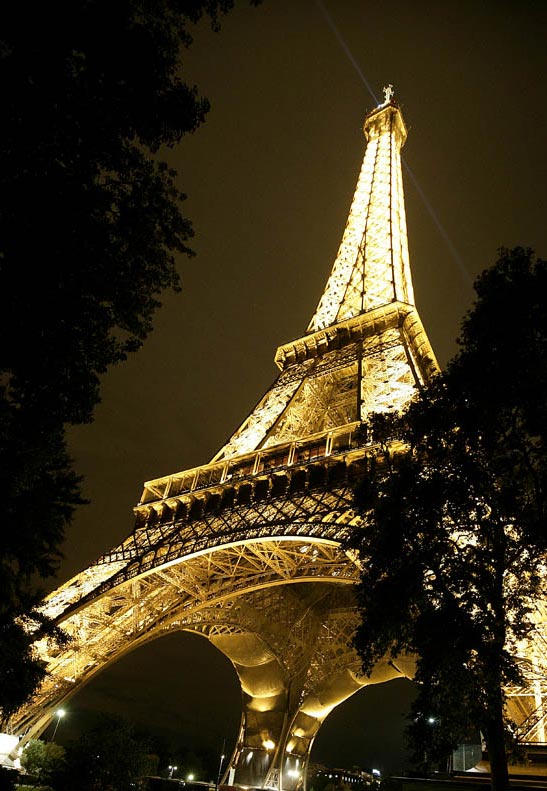
© 2010 Andy Long All rights reserved.
Try a variety of angles on your shots.
While you can reach all the favorite spots with a good bit of walking around the large city, taking the Red Bus, which stops at nine of the major points of interest, and/or the Metro subway will cut down on the time and energy you’ll need. The problem with taking the easy way out is that by riding you’ll miss many great street scenes such as cafes, statues, water fountains, and other hidden gems. You’ll require at least four nights stay to walk your way to as many great photographic opportunities as possible in and around Paris.
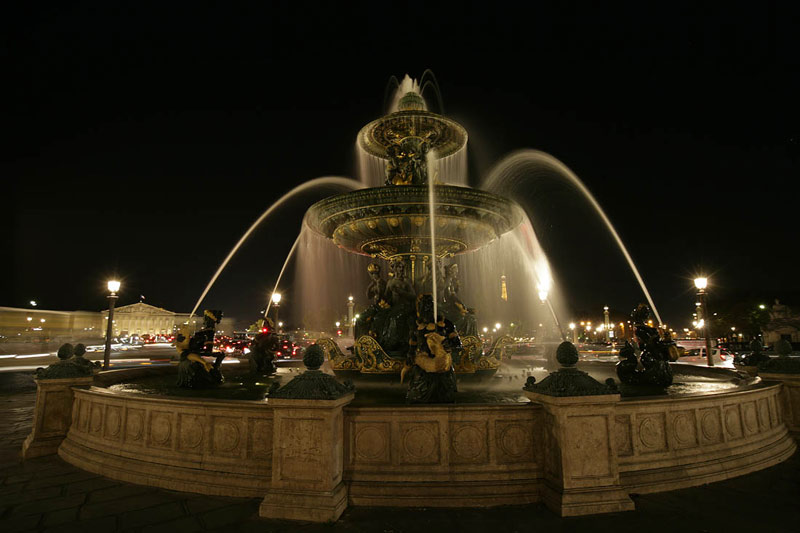
© 2010 Andy Long All rights reserved.
Shots at night can produce stunning images.
The area around the Eiffel Tower should be the first item on any agenda when you’re photographing Paris. There are so many angles to explore with this incredible structure that you can readily spend several hours there. Wide-angle images from very close, views from across the Seine River using numerous vantage points, and perspectives from throughout the Champ de Mars provide excellent images. A day visit is a must before you do a night shoot, so you can scout out the best places to set up to get good shots. Since the tower is visible from other areas, it can also provide a nice backdrop for other good foreground subjects.
While the Louvre is the most famous museum in Paris, photography of the outside of the area is best taken at night when both the old building and the new glass pyramid are lit. The pyramid is set in a water feature that creates great reflections. If you experiment by moving around, you’ll discover memorable images you can capture.
For street scenes, the area around Champ de Mars–including Rue Cler, Ile de le Cite, Le Marias, and Concorde Plaza–offers plenty of opportunities. Between Concorde Plaza and the Louvre lies a park that hosts several interesting statues. The Plaza also has two large water fountains that are good subjects both day and night as well as a statue.
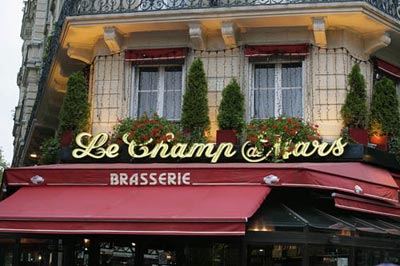
© 2010 Andy Long All rights reserved.
Street-side cafés and businesses are a must to shoot.
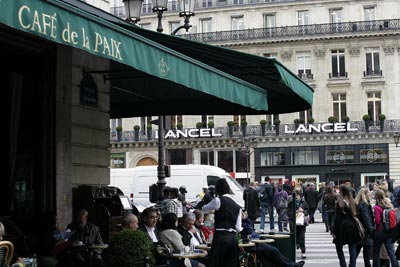
© 2010 Andy Long All rights reserved.
Not too far from the Eiffel Tower, you’ll find the Rodin Museum which has quite a few sculptures outside on the grounds of the park. While you’re in Paris, you’ll want to walk through at least one museum, but with so many from which to choose, it will be impossible for you to see them all. The most famous is the Louvre, but because of its size, it’s challenging if not impossible to feel satisfied with a single tour. The Orsay Museum is an attractive museum choice, dedicated to impressionistic work. One city guide lists seventeen different museums, so you’ll be forced to select those that are of particular interest. In addition to the many museums, you may be interested in the many art galleries spread out across town.
A few bits of advice may help you as you seek out subjects for your images. You’ll encounter refurbishing going on at numerous sites in Paris. While this work takes away from some images you might have planned to create, it’s still good to get photos of the icons of the area. While you’re shooting, be sure to take images with people in them. Actually, it’s difficult not to include people in most photos taken in Paris, because the city is quite crowded and almost everyone gets around by walking. Street-side cafes with people sitting outside show the true character of Paris.
Flower and produce markets located throughout the city provide plenty of photo ops. However, make sure to ask if it’s alright to take photos before you begin, as not all vendors wish to have pictures taken of them or their products. The insides of some small bakeries and shops have great Old World architecture in them. Again, ask if it’s okay to take a photo. (I always liked asking in little bakeries as there were great photos to be taken as well as some great pastries to buy as a thank you for permission to shoot.)
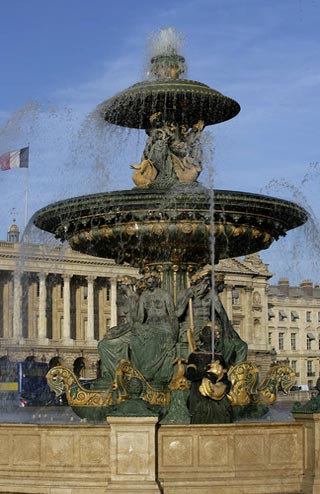
© 2010 Andy LongAll rights reserved.
You’ll find plenty of ornate water fountains around Paris.
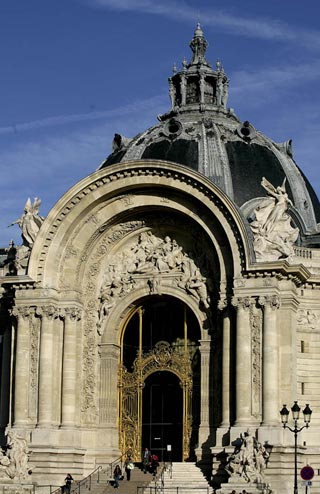
© 2010 Andy Long All rights reserved.
You’ll find the old world architecture captivating.
While it’s nice to go home with all of the great post card shots from Paris, look for odd angles to bring out the uniqueness of the architecture that is unmatched in the United States. Also, take shots of the signs that accompany statues, buildings, and special locations to help you identify your subjects later on. If you’re traveling with a group, go ahead and get some group shots of people in front of major points of interest. While these might not make for a great print to hang on a wall, they will preserve your memories of your trip. And who can go to Paris and not take in the cafés, bistros, and restaurants? A great setting is a café along the Seine River overlooking the Eiffel Tower, where you can enjoy a special dinner before heading out to photograph the iconic structure which was built in 1889 for the World’s Fair.
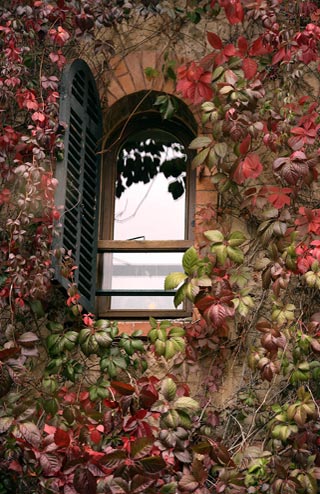
© 2010 Andy LongAll rights reserved.
Contrast in color and texture will draw the viewer’s attention.
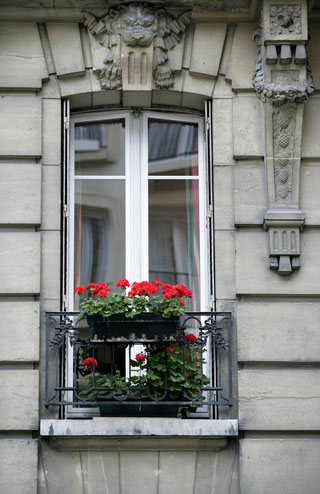
© 2010 Andy Long All rights reserved.
You find most windows adorned with flower boxes.
The best months to visit Paris during good weather are May, June and September. Carrying equipment might seem cumbersome, but it’s best to take a tripod to get the best shots. Although you will stand out from everyone else, you’ll go home with much better images, especially the long exposure shots at night. As for lenses, a good zoom wide-angle as well as a moderate telephoto zoom in the 70-200mm range will be almost all that is needed. A flash to add some fill light in certain settings can also come in handy. By using a telephoto, it’s possible to get tight shots of bits and pieces of the whole. In spite of the fact that Parisian architecture is on a grand scale, getting tight on some of the details can be very interesting. They spared no expense on the tiny things in the architecture and this is what makes the whole of Paris an incredible photo destination. And this doesn’t even include a visit to the Palace of Versailles with its incredible gardens.
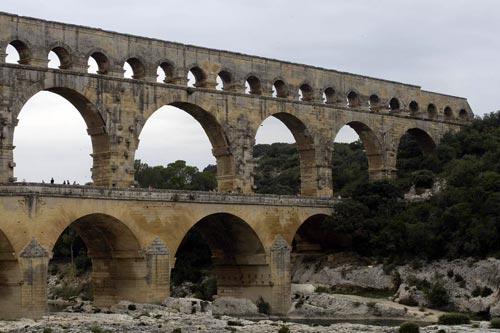
© 2010 Andy Long All rights reserved.
Pont du Gard Aqueduct
Venturing to other parts of the French countryside can provide other great photo opportunities. You can find images that contrast with those in Paris by traveling to Provence and the Cote d’Azur, French Riviera. Plan to stay near Avignon when you visit Provence and be sure not to miss the Palace of the Popes and the Pont du Gard. Both of these can be done in one day and then you can take side trips to little villages to fill a two night stay.
The architecture in and around the Palace of the Popes is worth visiting even if you don’t have a camera. Again, looking for parts rather than the whole is the best option because there are quite a few pieces that reveal the way buildings were constructed in the 1300s. Besides images from in and around the building, shots of the whole area from across the river enhance a visit to this site.
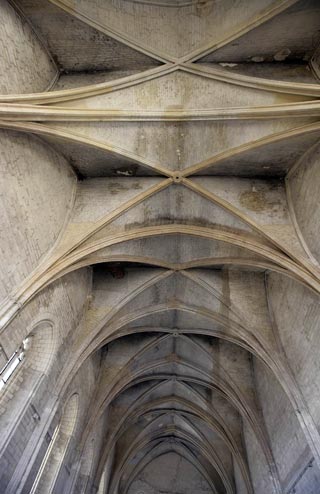
© 2010 Andy LongAll rights reserved.
Ceiling in the Palace of the Popes
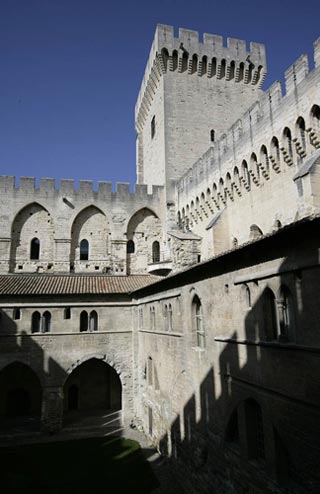
© 2010 Andy Long All rights reserved.
Palace of the Popes castle wall
If you stop at Pont du Gard, a Roman aqueduct that goes across the Gard River, take time to roam around to find multiple vantage points. This is designated a World Heritage Site that was built around 1 A.D. Close-up views show off the craftsmanship of the structure while more distant angles bring out the grandeur of the aqueduct.

© 2010 Andy Long All rights reserved.
Mediterranean Sea at Monte Carlo
The final leg of a good excursion through France would require a stop in Nice. Street markets, the Cote d’Azur (blue coast), a picturesque Greek Orthodox Church and the Roman Ruins of Cemenelum make Nice a perfect base location. From there, you could take a day for an excursion to the medieval village of Eze high on a rocky peak overlooking the Mediterranean Sea. This ancient fortified village still boasts the ruins of its 12th-century castle. On the castle grounds you can explore the Jardin (garden) Exotique. You’ll be delighted by an incredible view of the coast and the surrounding city from the top. From Eze, you can continue on to the principality of Monte Carlo within Monaco where you can observe and photograph the changing of the guard at the palace, visit the famous Oceanographic Museum that was Jacque Cousteau’s base, and shoot the colorful buildings that are common along the French Riviera.
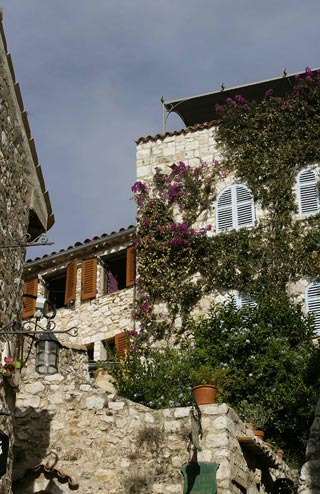
© 2010 Andy LongAll rights reserved.
Stone walled structures are throughout the medieval village of Eze.
No matter where you turn here in the south of France, you will discover potentially great pictures around every corner. It’s just a matter of how many shots you want to take and how much time to spend in one spot so that you will have time for more places. A trip to France may surprise you, as it did me, by being far more enjoyable than I originally anticipated, so plan your trip and have fun.
by Andy Long

Leave a Reply